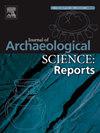古代晚期的护理:在西班牙北部 Herrera de Pisuerga 一个人前所未有的病理学案例中应用护理生物考古学方法
IF 1.5
2区 历史学
0 ARCHAEOLOGY
引用次数: 0
摘要
对生物考古学家来说,研究过去与健康相关的护理工作已成为一个越来越有价值的重点,因为他们希望更深入地了解前现代文化中社会关系的方方面面,但迄今为止,还没有对伊比利亚半岛早期历史时期的护理工作进行过生物考古研究。这项工作弥补了这一不足。2016 年在西班牙北部 Herrera de Pisuerga 晚期古代墓地发掘的第 16 号墓葬中,有一具保存完好的成年男性遗骸,该遗骸显示了骨质考古学记录中罕见的严重创伤证据:左前臂蒙特加亚脱位骨折,愈合后出现桡骨与桡侧关节突触,影响了左上肢的使用。我们采用生物考古学的护理方法分析了这一病理现象对 "16 号墓葬 "在社区内独立活动能力的影响,结果表明,该个体因手臂功能永久性受限而接受了长期护理,最初是作为直接支持,后来是作为群体的 "迁就"。此外,该研究还讨论了与牙齿脱落和咀嚼功能受损等有关的重大牙科病理学证据,以及进一步提供健康相关护理的可能要求。采用跨学科方法,还简要讨论了护理的道德方面及其动机。这项工作为未来对古代晚期护理工作的生物考古学研究提供了一个平台,并为这一时期护理工作生物考古学应用方面有限的知识体系做出了贡献。我们打算将护理生物考古学分析扩展到该墓地的其他墓葬以及其他社区的墓葬,以便进行群体层面的分析。本文章由计算机程序翻译,如有差异,请以英文原文为准。
Care in Late Antiquity: Applying the bioarchaeology of care method in the case of an unprecedented pathology in an individual from Herrera de Pisuerga, northern Spain
Although the study of past health-related caregiving has become an increasingly rewarding focus for bioarchaeologists seeking deeper insights into aspects of social relations in pre-modern cultures, to date there has been no bioarchaeological research into caregiving practices in the early historic periods of the Iberian Peninsula. This work remedies this deficiency. The well-preserved remains of Burial 16, an adult male recovered from the Late Antiquity cemetery of Herrera de Pisuerga (northern Spain) in 2016, display evidence of a severe trauma which is unusual in the osteoarchaeological record: a Monteggia dislocation fracture of the left forearm, which healed with radioulnar synostosis affecting the use of the left upper limb. The ramifications of this pathology for Burial 16′s ability to function independently within the community are analyzed using the bioarchaeology of care method, and results suggest the individual received long-term care in response to permanent limitation of the arm function, initially as direct support, then as “accommodation” from the group. Additionally, osteological evidence for significant dental pathology, associated, inter alia, with the loss of teeth and compromised masticatory function, are discussed in relation to possible requirements for further provision of health-related care. Employing a transdisciplinary approach, the moral aspects of caregiving and its motivations are also briefly discussed. This work provides a platform for future bioarchaeological research into caregiving during Late Antiquity, and contributes to the limited body of knowledge regarding the application of bioarchaeology of care in this period. We intend to extend bioarchaeology of care analysis to other burials in this cemetery, as well as to those from other communities, allowing a population-level analysis.
求助全文
通过发布文献求助,成功后即可免费获取论文全文。
去求助
来源期刊

Journal of Archaeological Science-Reports
ARCHAEOLOGY-
CiteScore
3.10
自引率
12.50%
发文量
405
期刊介绍:
Journal of Archaeological Science: Reports is aimed at archaeologists and scientists engaged with the application of scientific techniques and methodologies to all areas of archaeology. The journal focuses on the results of the application of scientific methods to archaeological problems and debates. It will provide a forum for reviews and scientific debate of issues in scientific archaeology and their impact in the wider subject. Journal of Archaeological Science: Reports will publish papers of excellent archaeological science, with regional or wider interest. This will include case studies, reviews and short papers where an established scientific technique sheds light on archaeological questions and debates.
 求助内容:
求助内容: 应助结果提醒方式:
应助结果提醒方式:


